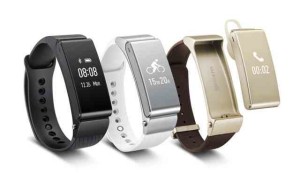 The Verge reported over the weekend that Huawei’s quirky Talkband B2 fitness tracker will be the first non-Jawbone device to enter the Jawbone software ecosystem, thereby throwing the troubled device maker a lifeline. The underlying fact may be correct, but the analysis is a little muddied.
The Verge reported over the weekend that Huawei’s quirky Talkband B2 fitness tracker will be the first non-Jawbone device to enter the Jawbone software ecosystem, thereby throwing the troubled device maker a lifeline. The underlying fact may be correct, but the analysis is a little muddied.
There is clearly a wearables ecosystem fight going on. Apple and Google are doing their usual thing with their HealthKit and Fit. But Fitbit, Runtastic, UnderArmour, Jawbone, and everyone else is holding their data close to their vest, seemingly because the APIs don’t really exist to make integration the least bit smooth. (Take a look at this help document from UnderArmour to see how tricky it can be.)
It’s also worth noting the Basis announced recently that it will play nice with both Google and Fit, so note: the TalkBand may be the first device to explicitly work with Jawbone; it is not the first to explicitly work with HealthKit.
But of all the warring standards, Jawbone has long stood alone in explicitly adapting to Apple HealthKit; indeed, there’s a version of its UP iPhone app that doesn’t require a Jawbone tracker at all. The same certainly can’t be said of Fitbit, for instance. Jawbone, for all the trouble its business appears to be in — and maybe because of the trouble it appears to be in — is the sole tracker maker that makes it easy to work with third-party devices.
That’s where Huawei comes in, and where The Verge goes a bit astray. The TalkBand B2, introduced a few months ago at Mobile World Congress and now shipping, is pretty quirky. It’s a Bluetooth headset with a wristband component, and at $179 does not seem to be a compelling device.
Is it important that the TalkBand integrates with UP? Probably, if only as a demonstration that it can be done at all, and that the path to the Apple ecosystem may lead through Jawbone. It’s probably important to Huawei, which is now part of Apple’s gravitational well.
An important first? Maybe. But a savior and a directional indication for Jawbone’s business? Not so much,